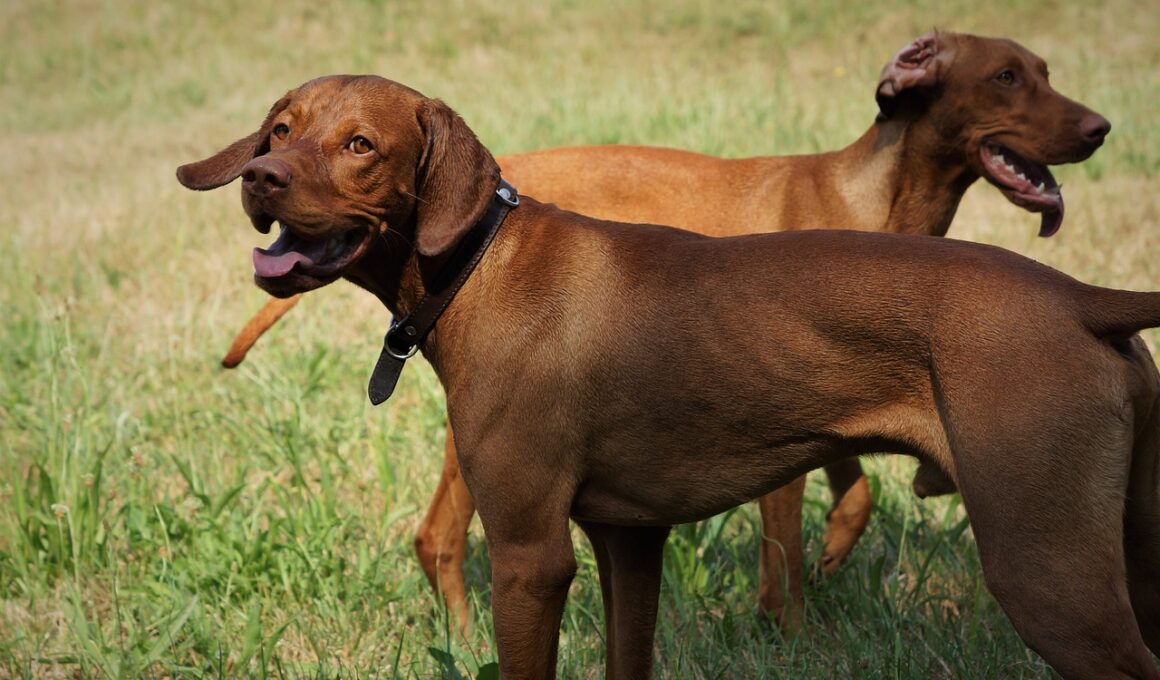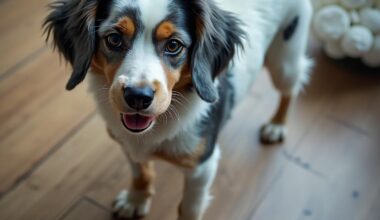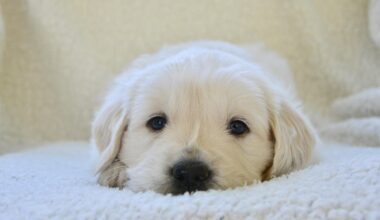Tracking Injured Game: Specialized Training Techniques
Tracking an injured game is a vital skill for hunting dogs. This specialized training enhances a dog’s ability to locate and retrieve wounded animals effectively. Training methods typically incorporate scent discrimination, retrieval, and endurance assessments. Understanding how to implement these techniques is crucial for success. First, trainers must select appropriate breeds known for their tracking abilities. Breeds like Bloodhounds, Labrador Retrievers, and German Shepherds are often ideal choices due to their natural instincts. The focus of the training program is developing the dog’s tracking skills progressively. This involves introducing them to various scents and environments. During training sessions, utilize high-value rewards such as treats or praise to reinforce positive behavior. Organization of sessions with varied challenges will keep the dog motivated. Additionally, consistent practice promotes muscle memory for tracking patterns. Start with easier trails, gradually increasing difficulty as the dog improves. It’s also essential to familiarize the dog with the environment where hunting will occur. Working with other experienced trainers can provide valuable advice and techniques to apply throughout the training process. The ultimate goal is to create a reliable, efficient tracking companion who can aid hunters effectively.
Essential Equipment for Tracking Training
To ensure a successful training regimen for tracking injured game, some essential equipment can enhance the process significantly. First, a high-quality harness designed for tracking is crucial; it should fit comfortably while allowing unrestricted movement. A long lead or tracking line is also necessary to give dogs freedom while maintaining control during sessions. Consider using a tracking collar equipped with GPS technology to locate the dog quickly and ensure safety in vast hunting areas. Additionally, multiple scent articles, such as pieces of the target animal, will aid in scent discrimination training. Using a variety of terrains during training is vital; diverse environments enhance the dog’s adaptability to real-world scenarios. A portable water bowl is beneficial to keep the dog hydrated as tracking can be strenuous. Moreover, investing in a small first-aid kit can be invaluable during practice sessions to address any minor injuries or mishaps. Remember to take plenty of treats to maintain motivation during practice. Finally, a journal to track progress can help with assessing the training efficacy and determining what techniques are successful. Gathering feedback and making adjustments based on these observations will contribute to a well-rounded training plan.
One of the most effective specialized techniques for training hunting dogs in tracking injured game is scent imprinting. Scent imprinting involves introducing dogs to the specific smell of the game they will be tracking. This technique is essential as it enables the dog to forge a strong connection between a particular scent and their hunting objectives. It is advisable to use actual scent articles from the intended game during this phase. Trainers can start by exposing the dog to a small sample of the scent, allowing them to investigate it. Following this, create a trail that leads from the scent article to a rewarding object, such as a toy or treat. This association fosters the dog’s motivation to follow the scent trail. Progressively lengthen the trails, integrating various terrains and challenges. Ensure positive reinforcement is consistent during this process to cultivate confidence in the dog. Additionally, gradually introduce decoys or distractions to test the dog’s focus and adherence to tracking. This way, the dog learns to differentiate between relevant scents and distractions, optimizing their hunting efficiency. Regular practice in diverse environments enhances the dog’s ability to track injured game in real hunting situations.
Another critical aspect of training hunting dogs in tracking injured game is endurance building. Endurance is essential not only for the dog’s physical stamina, but also for their mental focus throughout a tracking session. The process can start by incorporating longer walking sessions at a steady pace, slowly increasing the distance over time. Carrying water and frequent breaks will help keep the dog hydrated, ensuring they can maintain performance. Training sessions can mix running, walking, and rest periods to simulate real hunting scenarios. Gradually introduce different terrains, such as hills, woods, or fields, to challenge the dog physically and mentally. Additionally, incorporate short tracking exercises during these endurance-building sessions to keep the dog engaged. Dogs should be rewarded with toys or treats after completing the endurance course, reinforcing positive associations. It’s essential to progress slowly to avoid overstressing the dog, monitoring closely for any signs of fatigue. Health checks are also vital to ensure the dog’s overall well-being during training. Conditioning routines can further improve the dog’s muscular and cardiovascular systems, contributing to enhanced functionality during tracking. Ensuring a balance between endurance training and proper recuperation supports a successful outcome in your tracking endeavors.
Positive Reinforcement Techniques
Positive reinforcement techniques are a cornerstone in the specialized training of hunting dogs for tracking injured game. This approach encourages desired behaviors through rewards, fostering an enjoyable learning experience for the dog. By offering treats, praise, or toys as incentives, a strong bond develops between the trainer and the dog. Setting up training sessions to be fun and engaging is vital for maintaining the dog’s enthusiasm. Begin by allowing the dog to explore scents without pressure. Once the dog successfully identifies a scent, reward them immediately to reinforce the behavior. As the dog progresses, vary the rewards to include higher-value items, enhancing their motivation. Proper timing is crucial, as the reinforcement should be given quickly after the desired action. Gradually introduce tracking scenarios, rewarding the dog only when they follow the correct scent trail. Tracking exercises can be structured with increasing complexity, linking previous successes with new challenges. Over time, the dog learns to associate tracking with positive outcomes, solidifying their skills. Ongoing encouragement and support cultivate an environment for the dog to thrive, ultimately improving their tracking proficiency during actual hunting situations.
Incorporating socialization into the specialized training of hunting dogs for tracking injured game is paramount to a well-rounded canine. Socialization exposes dogs to various people, animals, and environments, reducing anxiety and fostering confidence. A well-socialized dog will be more adaptable during real hunts, where distractions are abundant. Start socialization early, introducing the dog to different experiences gradually. Organized puppy classes provide opportunities to interact with others, teaching essential skills for healthy emotional development. These classes help build a foundation for responding to commands amidst distractions. Once the dog has mastered basic training, gradually expand their exposure to hunting-related situations. This may involve visits to hunting locations or simulating field conditions with other dogs. Frequent interaction with experienced hunting dogs will also aid in developing proper tracking instincts. During these interactions, ensure your dog is observed exhibiting positive behaviors, reinforcing their skills in realistic environments. Remember to pair socialization activities with training sessions to create a coherent learning experience. The end goal is confident, focused tracking dogs that excel when placed in real hunting scenarios while remaining composed around people and other animals.
Evaluating Progress and Adjustments
A crucial component of specialized training for hunting dogs tracking injured game involves evaluating their progress over time. Structured assessment sessions allow trainers to identify areas of strength and weakness in a dog’s performance. Keeping detailed records of the dog’s training sessions significantly helps in monitoring development. During evaluations, incorporate various tracking scenarios that mimic hunting conditions. These sessions should allow for the practical application of skills learned during training. Pay attention to the dog’s behavior within different environments, assessing how effectively they utilize their tracking skills amidst various distractions. If certain patterns emerge wherein the dog struggles, it may indicate an area requiring adjustment in training methods. This could involve modifying the complexity of scent trails or increasing reward frequency. Collaboration with experienced trainers can provide insights on any changes needed in the training plan. Remain patient and empathetic during the evaluation process, allowing time for the dog to adapt to changes made. Regular feedback to the dog reinforces learning and helps foster continued improvement throughout their training journey. Ultimately, consistent evaluations contribute to crafting a reliable hunting companion capable of excelling in tracking injured game.
The pursuit of tracking injured game with hunting dogs is a nuanced journey requiring dedication and informed techniques. Trainers play a crucial role in guiding dogs through tailored training, focusing on scent recognition, endurance, socialization, and continuous improvement. By utilizing positive reinforcement strategies, trainers ensure dogs remain motivated and engaged in their learning process. Additionally, equipping trainers with the right tools like tracking collars and harnesses enhances their effectiveness during training. Socializing dogs further prepares them for real-world hunting situations, reducing anxiety around distractions. As evaluations and adjustments occur regularly, trainers fine-tune their methods, maximizing the dog’s abilities. The result is a capable, resilient dog ready to assist in tracking injured game effectively and humanely. Adopting a holistic training approach that combines various elements—including the physical and emotional—ensures dogs are well-prepared for success. Whether novice or experienced trainers, the commitment to developing these essential skills will pay dividends in the field. The culmination of consistent practice, proper techniques, and patience allows dog and trainer to work in harmony, making every hunting trip a potentially successful experience. In conclusion, mastering tracking techniques is a rewarding endeavor for both dog and trainer alike.


